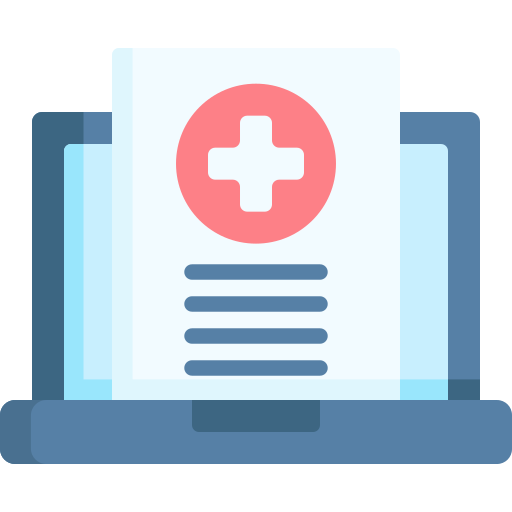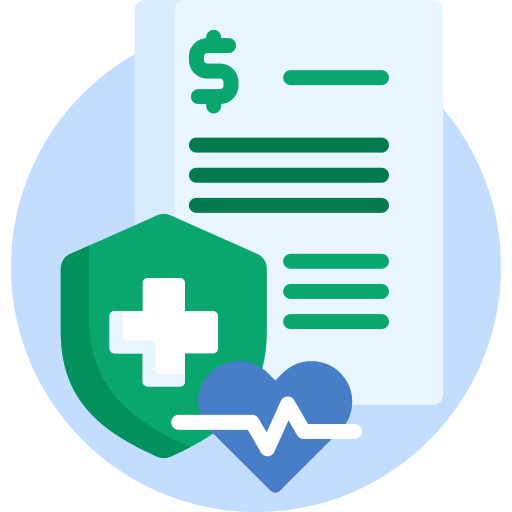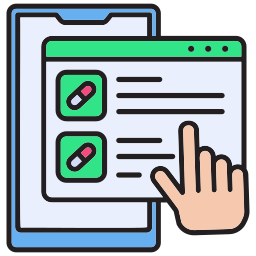Today, healthcare software and systems are widely used by providers and payers. The evolving needs of different systems demand seamless data exchange between various systems and applications. Health Level 7, popularly addressed as the HL7 standard, offers compliant protocols for transforming and interpreting healthcare data.
HL7 integration is an industry standard for healthcare data exchange between different systems. HL7 messages include vital information like demographic details, clinical observations, and treatment plans. The standardized format of HL7 messages ensures consistency and compatibility across the healthcare systems, enabling smooth communications.
Every healthcare organization today has a vendor application in a crucial role in augmenting hospital operations. This application has different functionalities, from EHR management to billing and clinical decision support. Integration of HL7 into such vendor applications can help in configuring specific actions or workflows based on incoming HL7 messages.
Let’s not make it so overwhelming for you! We will start with understanding what HL7 v2 messages are, and how HL7 triggers streamlines data exchange, improves workflow efficiency, and ultimately delivers quality patient care outcomes.
Understanding HL7 V2
As we interpreted in the introduction, HL7 V2 is a messaging standard that maintains consistency across different systems and is crucial for healthcare interoperability.

To effectively address your organization's or project's unique interfacing needs, it is important to understand the distinction between HL7 messaging versions 2.3, 2.3.1, and the most recent 3. x. Although most messaging still relies on the older versions, comprehending the differences will enable you to confidently navigate the landscape of HL7.
HL7 Version 2
HL7 v2 is a popularly used healthcare messaging standard, facilitating the exchange of medical and patient data across systems. It aims to establish interoperability among health information systems by employing standardized messages with important event information. These messages include patient administrative activities, demographics, medical history, results, and financial data.
"We must strive for interoperability to streamline workflows, improve care coordination, and ultimately enhance patient outcomes in our healthcare systems."
How HL7 V2 is Configured in Healthcare Systems like EHRs?
The configuration of compliance regulations like HL7 v2 or FHIR is a critical step in enabling data exchange and interoperability. Often the whole process can be tiring and complex to implement which can also lead to different issues and errors. Let’s fix this by understanding the configuration process based on the context of a third-party app integration;
EHRs Implementation
EHR systems have completely digitized patient records, eliminating manual effort and paper trails. EHR systems are implemented in the operations to communicate with other existing systems. That’s where HL7 standards play their role. The standards translate the data, allowing data exchange between different systems and offering compliance and data security.
If we take the example of EPIC as our primary EHR system implemented in the hospital’s administration. The EPIC Client System Administrator (ECSA) plays an important role in configuring HL7 interfaces within the EHR system to provide data exchange with the external/ vendor application.
Establishing API Gateway Endpoints
API gateway endpoints serve as the entry points receiving HL7 messages from external sources. They ensure a secure and reliable transmission of these messages to the EHR system. The organizations can establish a standardized and controlled approach for external systems to communicate with EHR systems.
These endpoints provide a layer of protection by validating the incoming HL7 messages. The interconnected administrator will enable the necessary API required for integration. It can be either Hyperspace or Citrix administrator to assist with the configuration of the vendor app.
Transmission to AWS SQS
Once HL7 V2 messages have been transmitted to the API gateway endpoint, they undergo further processing through a well-established mechanism. These messages are forwarded to AWS SQS, which acts as a reliable and efficient queueing system. The AWS SQS is important to manage the flow of messages within the integrated architecture. It temporarily stores the HL7 messages in the queue, while ensuring protection in the processing.
The EHRs can efficiently handle large volumes of messages and distribute workloads across various other components with the help of AWS SQS.
Processing and Integrations
The after-process includes the extraction of medical data or clinical observations. It enables the integration within the EHR system to relevantly map out the processed HL7 data to patient records. This mapping process ensures the extracted data is correctly associated with the corresponding patient, allowing easy access and usage within the healthcare workflows.
Now this HL7 data helps healthcare providers to make informed decisions, provide appropriate care, and streamline complex workflows.
HL7 Parsing
All the interpreting processes of incoming messages and extraction depend on the parsing mechanisms. It involves systematically parsing HL7 segments, fields, and components to understand the data and integrate it into the system’s database.
The parsing identifies and separates the different categories of data in HL7 messages. This whole process helps the EHR system like EPIC understand the information in the HL7 message and appropriately store it in the database. Now healthcare providers, have updated data to make clinical decisions, ensuring interoperability across the different systems and organizations.
Sandbox Testing and Validation
Before launching the HL7 V2 configurations into a production environment, sandbox environments are used to test and validate the process. These environments serve as controlled testing environments where the compatibility of HL7 V2 configurations with external applications, can be monitored.
It involved various real-world scenarios by sending sample messages for testing. The messages are used to validate different aspects of the integration process. The developers can test the functionality and accuracy of the integration. This helps reduce errors and ensures the smooth workflow of the integration.
Production Environment Integration
Now we have done successful testing in the sandbox environment, the HL7 configurations are ready to be launched in the production environment. Now the deployment enables real-time data exchange between the EHR system and vendor applications.
"Health Connect is the answer to the challenges faced in healthcare data management. Our mission is to simplify the complexities of managing healthcare data through innovative technology solutions."
How Mindbowser can Help You with HL7 V2 Configuration?
Navigating the complexities of compliance configuration such as HL7 in healthcare workflows and systems requires a strategic approach. Mindbowser will empower your healthcare workflow with seamless HL7 integration solutions, ensuring smooth data transmission, improved interoperability, and improved workflow efficiency.
We bring in-depth knowledge and expertise in compliance standards, including HL7 V2, and their integration. With 12+ years of experience in the industry, we ensure smooth integration of any vendor application into your healthcare workflows and enable an efficient workflow at your hands.

Pravin Uttarwar, CTO of Mindbowser
As the CTO of Mindbowser, a healthcare-focused software development company, I am dedicated to delivering cutting-edge digital solutions that transform patient care and operational efficiency. With over 16 years of experience and as an MIT alumnus, I specialize in healthcare interoperability, FHIR-compliant systems, and AI-powered platforms, crafting scalable products and architectures tailored to the unique needs of healthcare providers and enterprises.
I have spearheaded the development of over 100 products and platforms, guiding them from concept to full-fledged solutions. My expertise extends to scaling remote tech teams, driving EHR integrations, and building secure, cloud-native healthcare solutions. By shaping technology visions and roadmaps, I help clients achieve long-term growth and success in the rapidly evolving healthcare landscape.
HealthConnect CoPilot enabled us to access real-time patient health data through integration with Apple HealthKit, enhancing care delivery while maintaining HIPAA compliance. This led to personalized care and improved outcomes for patients.

AI-enhanced Obstetrics Clinical Decision Support Platform
HealthConnect CoPilot's integration with Epic's Hyperspace has transformed our workflow. Automated post-delivery examinations and HL7 protocol use ensure accurate updates to Epic. Their expertise empowers informed decision-making in childbirth

Top Provider for Customized Healthcare Solutions
HealthConnect CoPilot's helped us to integrate with leading tracking devices such as Apple Watches and Fitbit. This integration enables effortless syncing of health data, providing users with real-time insights displayed directly on our flagship products: smart mirrors and digital calendars.

A Provider of Customizable Display Solutions
Post a comment Cancel reply
Related Posts
TEFCA FHIR Roadmap: What It Means for Healthcare Interoperability?
Disconnected systems don’t just slow you down—they put patients at risk. Every delay, duplicate test,…
Navigating the Future of Healthcare Integration with SMART on FHIR Apps
SMART on FHIR enables apps to plug directly into EHR systems like Epic EHR, Cerner…
TEFCA in Healthcare: A Complete Guide
Healthcare has long struggled with fragmented data systems. Patient records are often locked within isolated…
Model Context Protocol (MCP): Revolutionizing Healthcare Chatbots with FHIR Integration
Healthcare technology is experiencing a paradigm shift with the emergence of Anthropic’s Model Context Protocol…
Healthcare Integration: The Understanding & Its Impact in Healthcare
Healthcare integration refers to connecting various systems, applications, and data sources within the healthcare ecosystem…
Value-based Care vs Fee-for-Service
Healthcare payment systems can feel a bit like deciding between paying for each item on…









